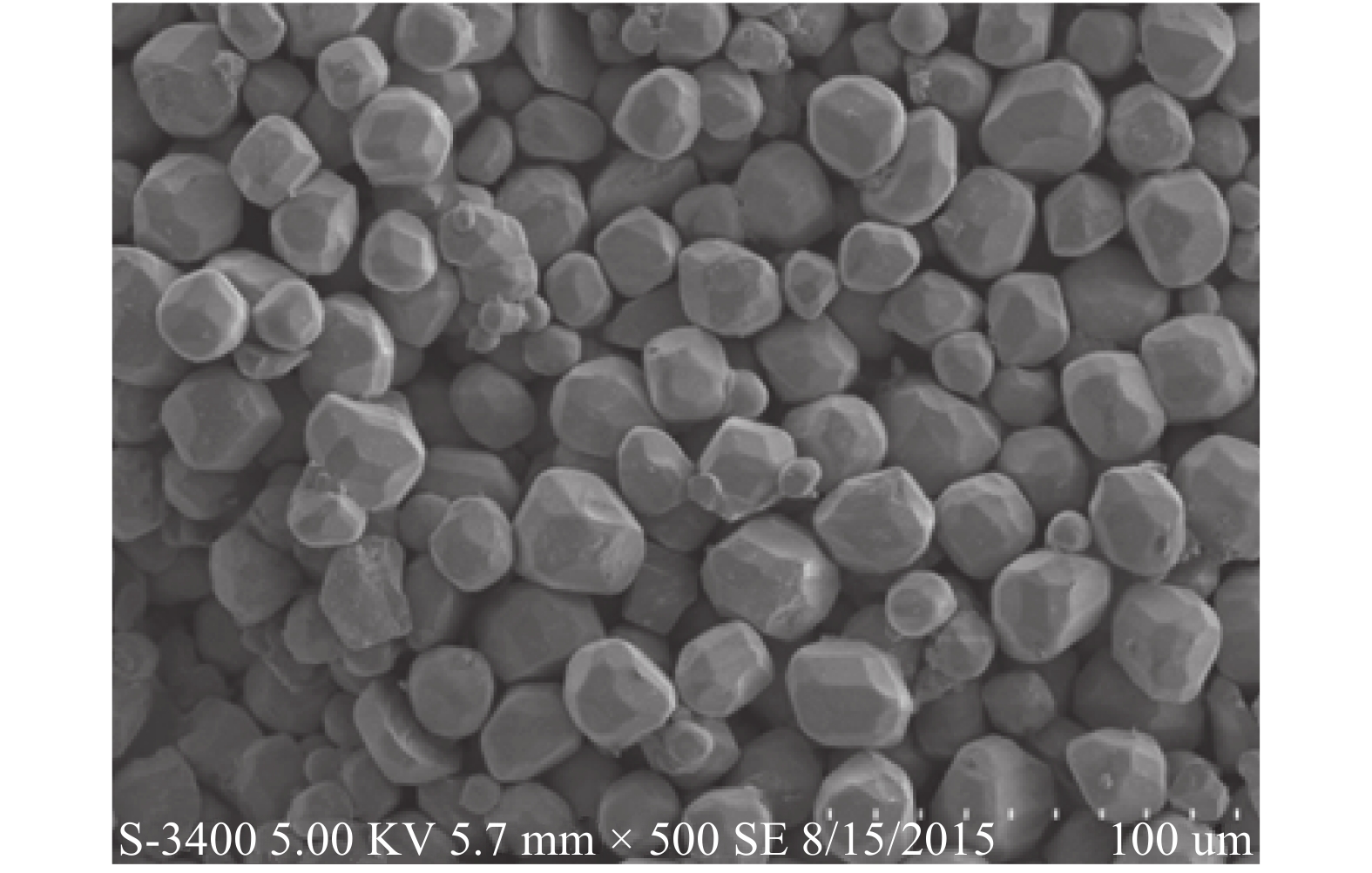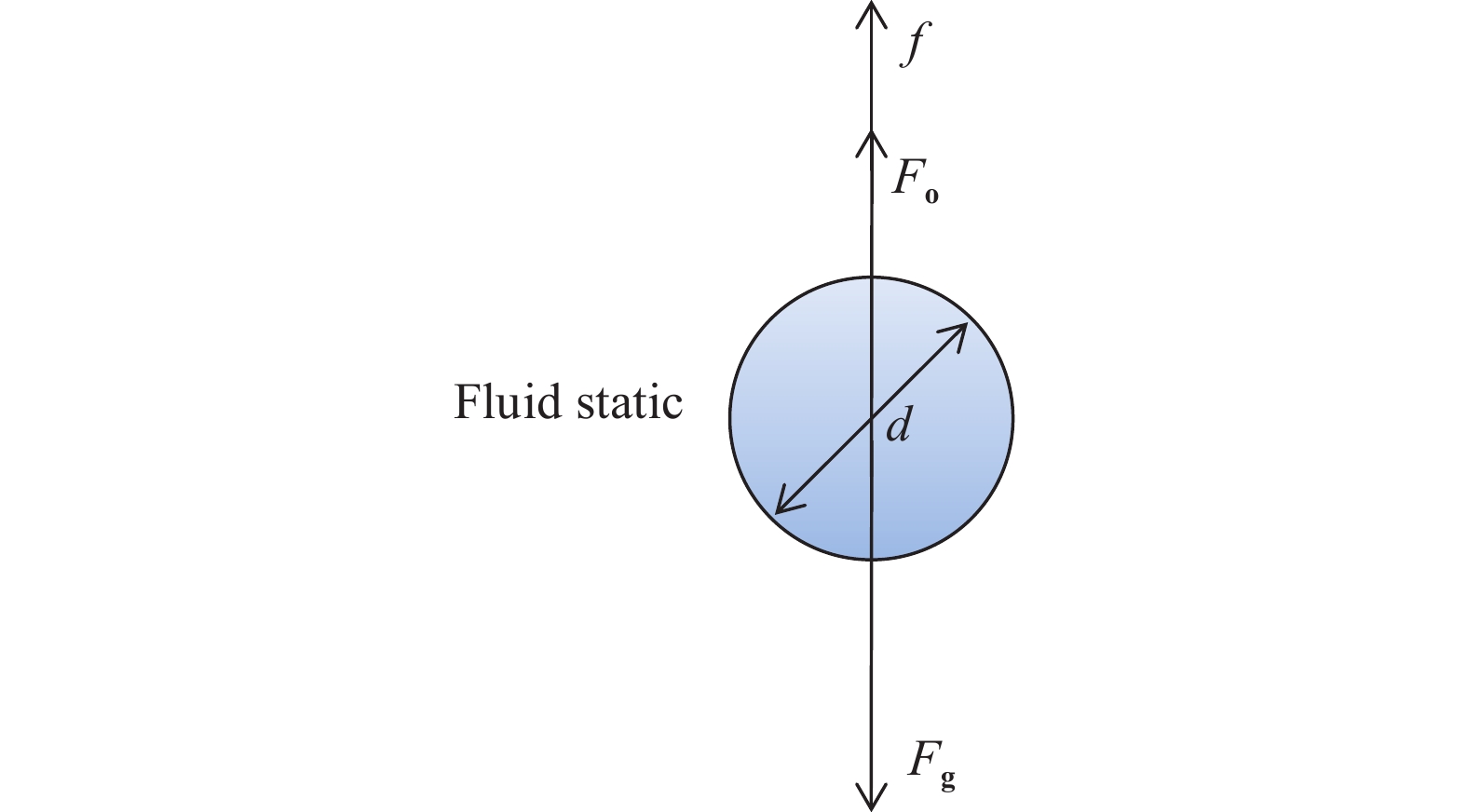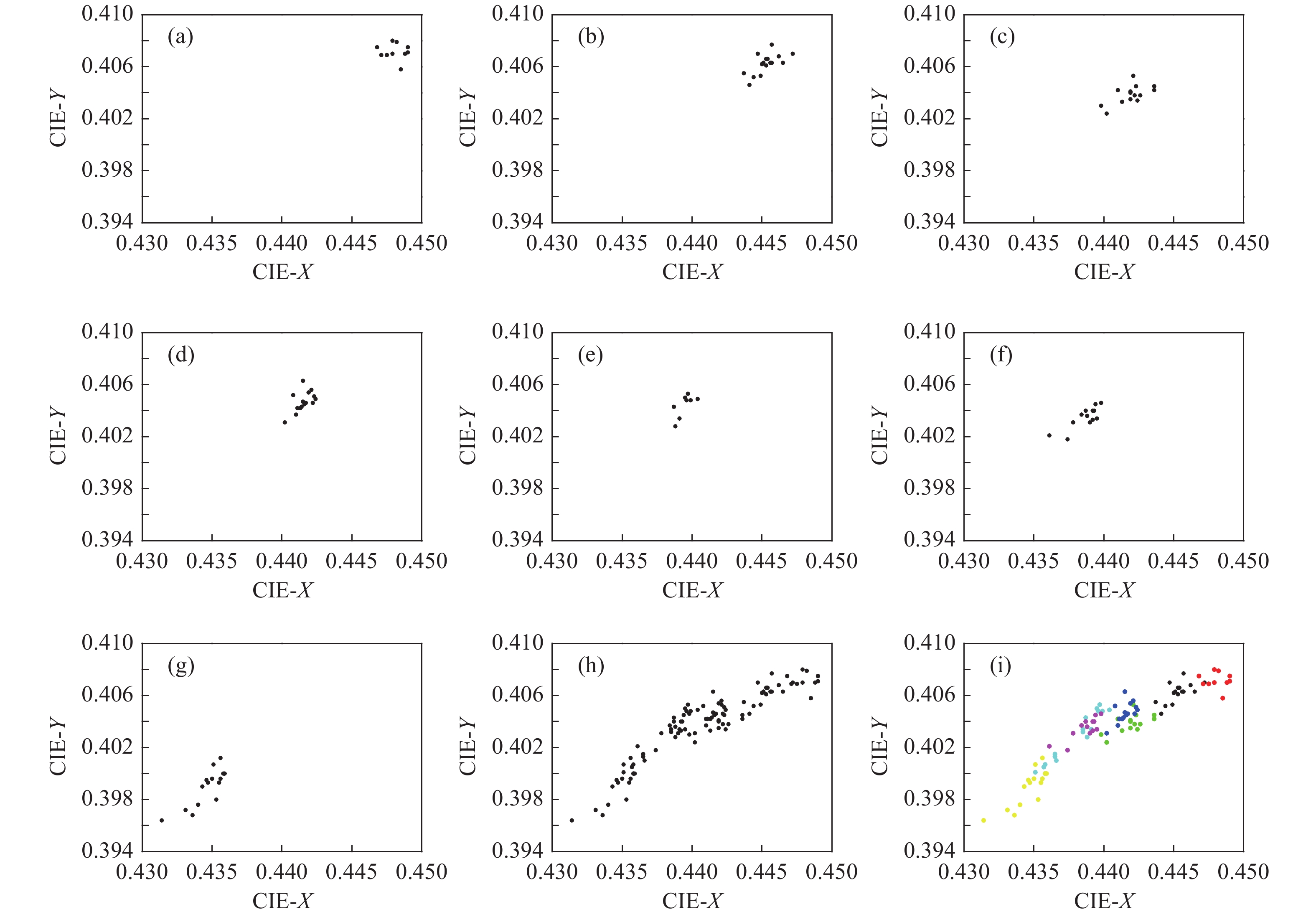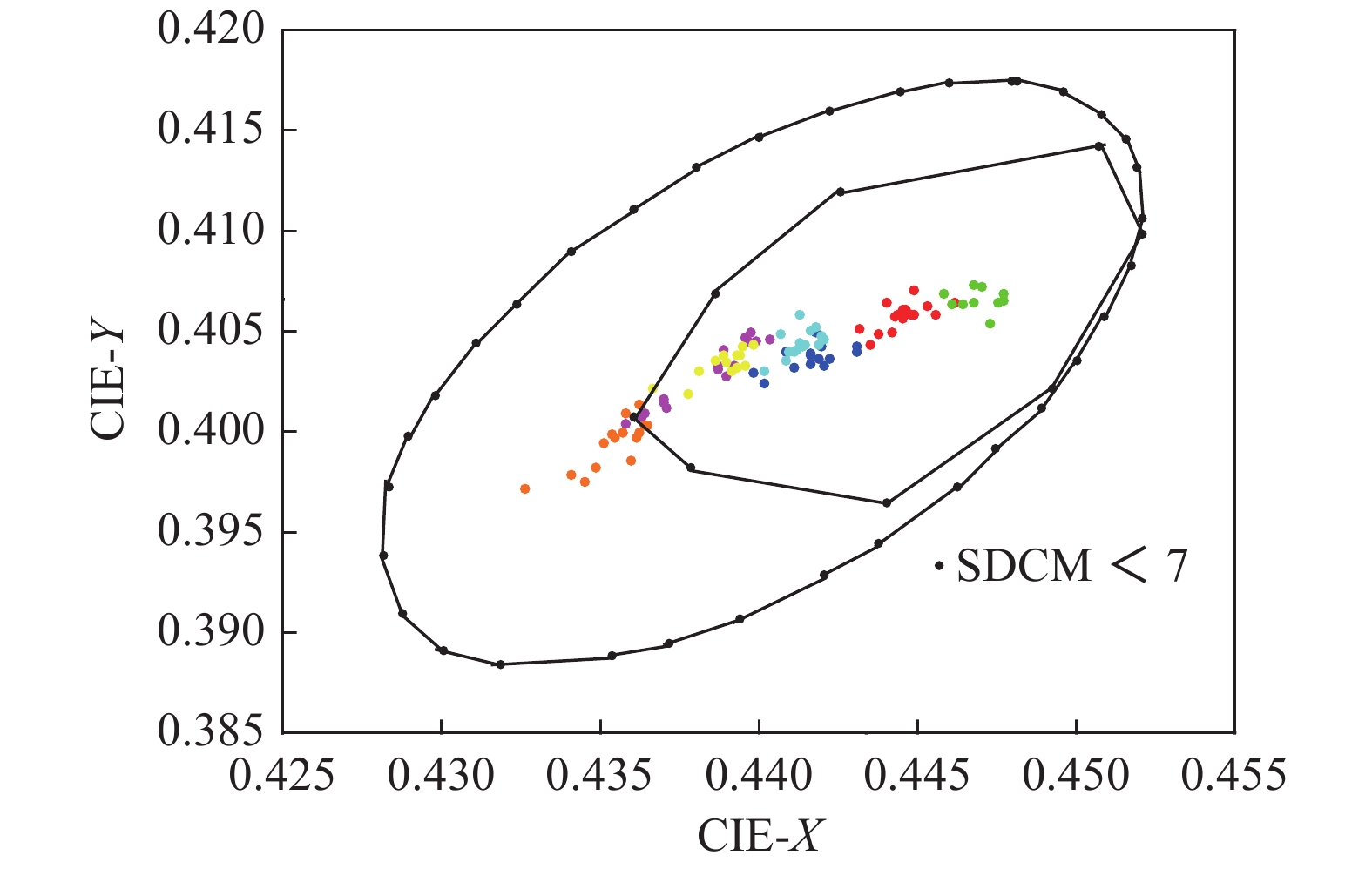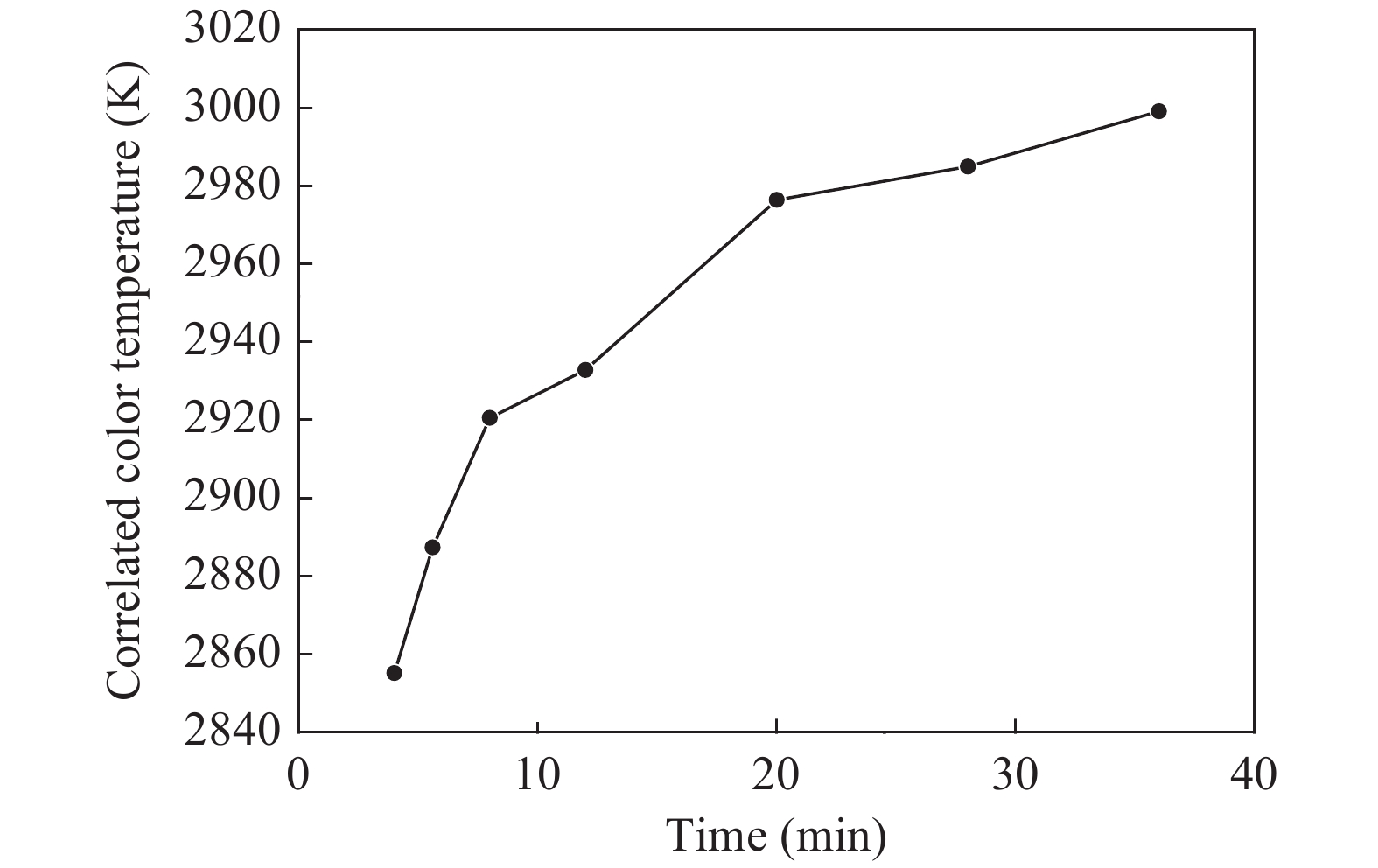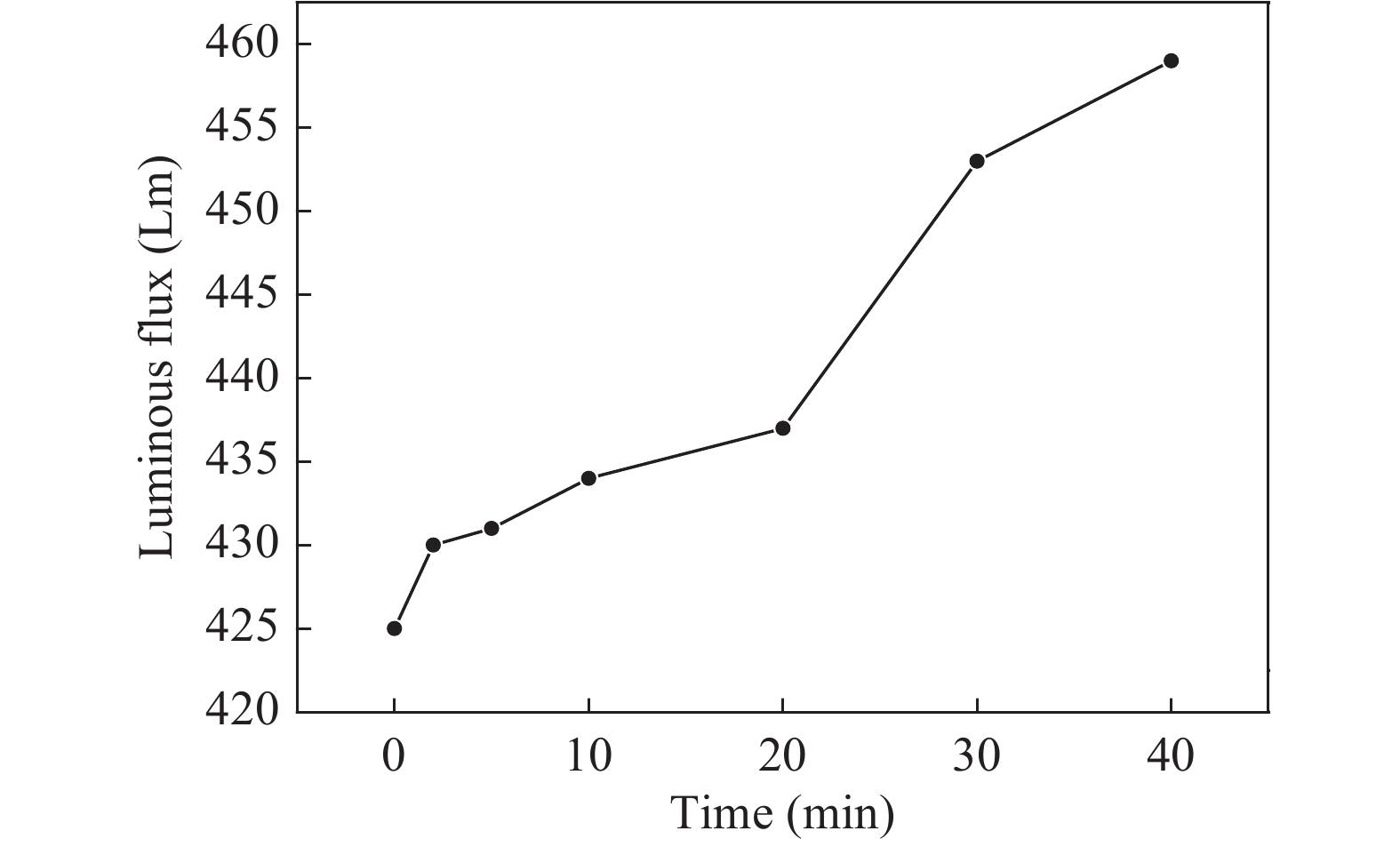| Citation: |
Yunyi Zhuang, Yong Wang, Liping Wang, Zhanguo Li, Wenbo Li, Lei Yang, Jun Zou. Effect of phosphor sedimentation on photochromic properties of a warm white light-emitting diode[J]. Journal of Semiconductors, 2018, 39(12): 124006. doi: 10.1088/1674-4926/39/12/124006
****
Y Y Zhuang, Y Wang, L P Wang, Z G Li, W B Li, L Yang, J Zou, Effect of phosphor sedimentation on photochromic properties of a warm white light-emitting diode[J]. J. Semicond., 2018, 39(12): 124006. doi: 10.1088/1674-4926/39/12/124006.
|
Effect of phosphor sedimentation on photochromic properties of a warm white light-emitting diode
DOI: 10.1088/1674-4926/39/12/124006
More Information
-
Abstract
In the process of producing a white light emitting diode, the consistency of the optical coherence and stability of the photochromic properties is a crucial index for measuring the quality of the product. Phosphor sedimentation is a significant factor affecting optical coherence, thus, in this paper, seven sets of control experiments were set up with the phenomenon of the phosphor precipitation at time intervals 0, 2, 5, 10, 20, 30, and 40 min. The color coordination concentration and optical properties were also tested. The results indicate that phosphor sedimentation occurs between 0 and 20 min, during which the color coordinate placement is concentrated, the central coordinates are (x = 0.4432 ± 0.004, y = 0.4052 ± 0.002); the quality was verified because the supply demand chain management (SDCM) was no greater than 7. Later, between 30 and 40 min, the central coordinates are (x = 0.4366 ± 0.003, y = 0.4012 ± 0.003), which had an SDCM value higher than 7, and had a more discrete color placement; it does not meet the requirements of the national standard GBT24823-2016 general lighting LED module performance.-
Keywords:
- optical coherence,
- phosphor,
- color coordinates,
- sedimentation,
- concentration
-
References
[1] Wang C H, Lin D W, Lee C Y, et al. Efficiency and droop improvement in GaN-based high-voltage light-emitting diodes. IEEE Electron Device Lett, 2011, 32(8): 1098 doi: 10.1109/LED.2011.2153176[2] Fang Z L. Future applications of light emitting diodes. Physics, 2003(05): 295[3] Dupuis R D, Krames M R. History, development, and applications of high-brightness visible light-emitting diodes. J Lightwave Technol, 2008, 26(9): 1154 doi: 10.1109/JLT.2008.923628[4] Shur M S, Zukauskas A. Solid-state lighting: toward superior illumination. Proc IEEE, 2005, 93(10): 1691 doi: 10.1109/JPROC.2005.853537[5] Zhang S H, Zhou M B, Hu J F, et al. Research progress in preparation of single phase silicate phosphor for NUV-white light emitting diodes. Mater Rev, 2009, 23(9): 25[6] Yang Z P, Liu Y F, Wang L W, et al. Luminescence properties of the single white emitting phosphor Eu2+, Mn2+ co-doped Ca2SiO3Cl2. Acta Physl Sin, 2007, 56(1): 546[7] Song G H, Miao J W, Jiang B, et al. White LED based on near UV LED chip precoated with tri-color phosphors. Semicond Technol, 2011, 36(8): 586[8] Liu Z Y. Research on key issues of design and manufacturing for high-power. Wu Han: Huazhong University of Science and Technology, 2010[9] Zukauskas A, Shur M, Gaska R. Introduction to solid-state lighting. Wiley, 2002[10] Hoelen C, van der Burgt P, Jungwirth P, et al. Color-consistent LED modules for general ligting. SPIE OPTO: Integrated Optoelectronic Devices. International Society for Optics and Photonics, 2009: 72310A[11] Feng H. Influence of phosphor settling on optical consistency of high-power LED. Wu Han: Huazhong University of Science and Technology, 2011[12] Yang B B, Zou J, Wang F C, et al. Optical and reliability properties of green YAG phosphors by Ga substitution. J Mater Sci: Mater Electron, 2016, 27: 3376 doi: 10.1007/s10854-015-4168-8[13] Wang B H, Wang X Z. New method for calculation of settling velocity of a spherodial particle. Powd Sci Technol, 1996, 2(2): 30[14] Schiller L, Naumann Z. A drag coefficient correlation. Vdi Zeitung, 1935, 77(318): 51[15] Li L, Liu H B, Yang X P, et al. Study on sedimentation law of cutting grains in solid liquid separator. Nat Gas Ind, 2005, 25(11): 62 -
Proportional views





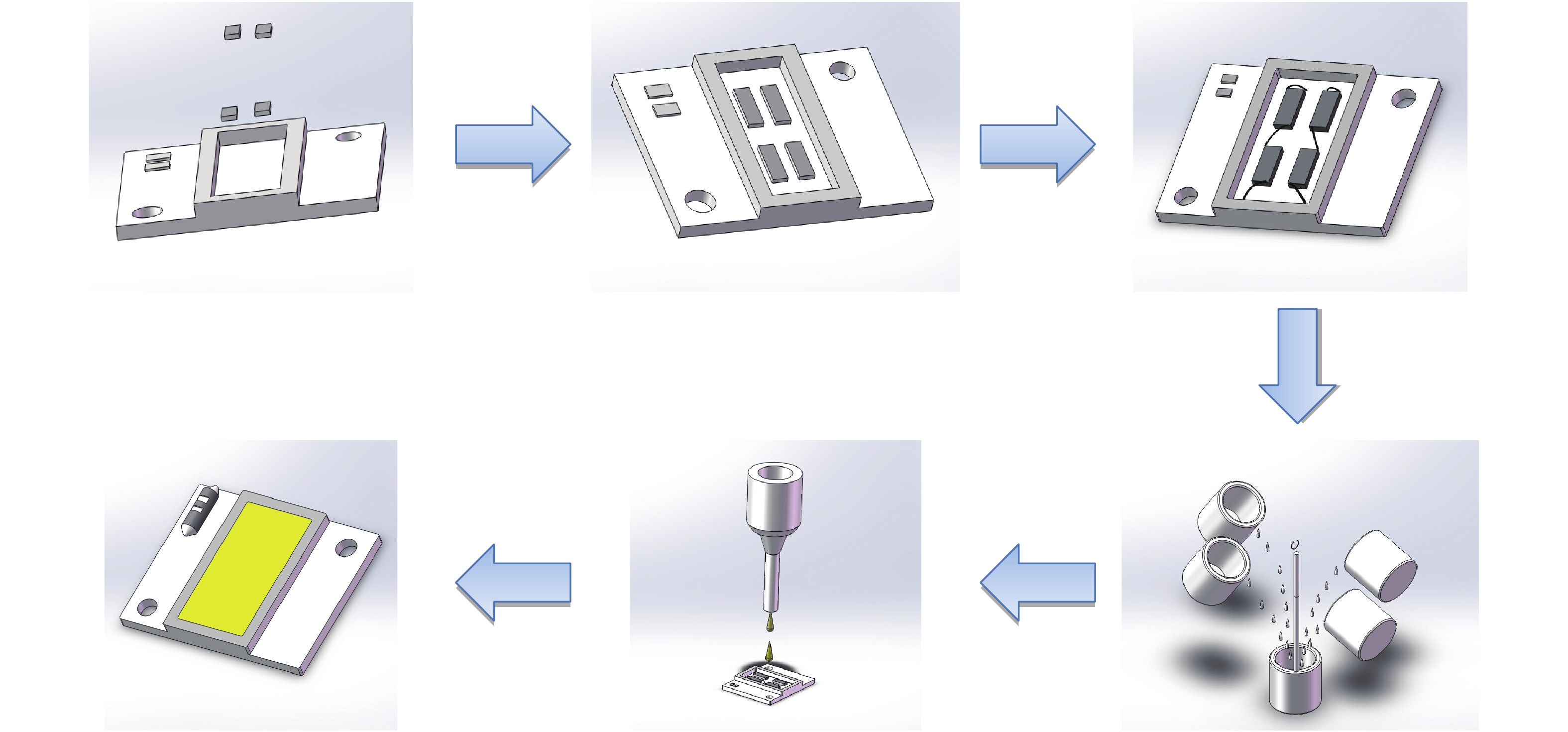
 DownLoad:
DownLoad:
